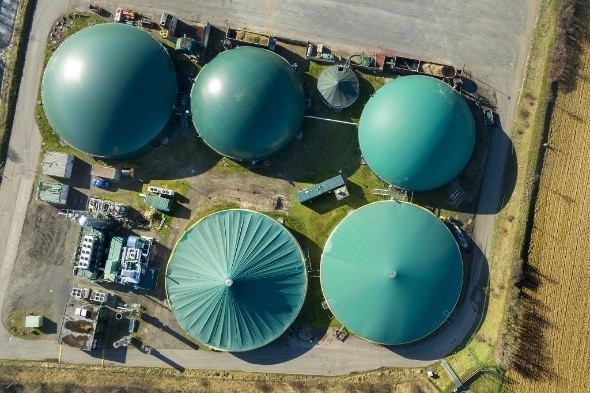Description

Disclaimer: Copyright infringement not intended.
Context
- Recently, a document titled The Green Shift: The Low Carbon Transition of India’s Oil and Gas Sector was released by the Energy Transition Advisory Committee (ETAC).
- It emphasized the need for India’s energy transition and highlighted various pathways to achieve a low-carbon future. Compressed biogas (CBG) can help plug this gap.
Biogas
- Biogas is an energy-rich gas produced by anaerobic decomposition of biomass. It is produced from waste / bio-mass sources like agriculture residue, cattle dung, sugarcane press mud, municipal solid waste, sewage treatment plant waste, etc.
- Biogas, a renewable fuel, constitutes mainly of methane (~60%), carbon dioxide (~40%), and traces of hydrogen sulfide.
.jpeg)
Compressed Biogas
- Biogas can be burned directly as a fuel or purified & upgraded by removing carbon dioxide (CO2), hydrogen sulfide (H2S) and compressed to make Compressed Bio-Gas (CBG).
- The CBG has methane content of more than 90%, which is similar to the commercially available natural gas in composition and energy potential.
- The purified biogas with more than 90% of methane can be compressed at 250 bar, and transported in gas cylinders (cascades) for the end use.
- CBG is exactly similar to commercially available natural gas in its composition and energy potential.
- With similar calorific value and other properties similar to CNG, compressed biogas can be used as an alternative, renewable automotive fuel.
- Given the abundance of biomass in the country, CBG has the potential to replace CNG in automotive, industrial and commercial uses in the coming years.
The government of India has set a target to increase the share of gas in the energy mix up to 15 percent in 2030 to make India a gas-based economy.
Benefits of CBG
There are multiple benefits from converting agricultural residue, cattle dung and municipal solid waste into CBG on a commercial scale:
- Responsible waste management, reduction in carbon emissions and pollution.
- Additional revenue source for farmers.
- Boost to entrepreneurship, rural economy and employment.
- Support to national commitments in achieving climate change goals.
- Reduction in import of natural gas and crude oil.
- Buffer against crude oil/gas price fluctuations.
Scheme to promote CBG in India: SATAT
- Sustainable Alternative Towards Affordable Transportation (SATAT) initiative launched in October, 2018 envisages setting up of 5000 Compressed Biogas (CBG) plants for production of 15 Million Metric Ton (MMT) per annum of CBG by 2023-24.
- Under the initiative, oil and gas marketing companies (OGMCs) viz, Indian Oil, HPCL, BPCL, GAIL and IGL have been inviting expression of interest (EoI) from potential investors/entrepreneurs to procure CBG for further selling to automotive and commercial customers. Oil and gas companies are signing commercial agreements for 15 years for procurement of CBG, to be further extended mutually.
|
PRACTICE QUESTION
Q. Consider the following statements:
1. Compressed Bio-Gas (CBG) has methane content of more than 90%.
2. CBG is exactly similar to commercially available natural gas in its composition and energy potential.
Which of the above statements is/are true?
(a) Only 1
(b) Only 2
(c) Both 1 and 2
(d) Neither 1 nor 2
Correct Answer: c- Both 1 and 2
|














